
Submit your email address to get a link for quick download on your desktop and get started!
Virtual COM ports are used to extend the capabilities of computers and laptops that need to interact with serial devices but which lack physical serial interfaces. These machines may not have any serial ports or might not have the necessary number available for a specific use. A virtual serial port can be used to send and receive serial data over LAN or the Internet.
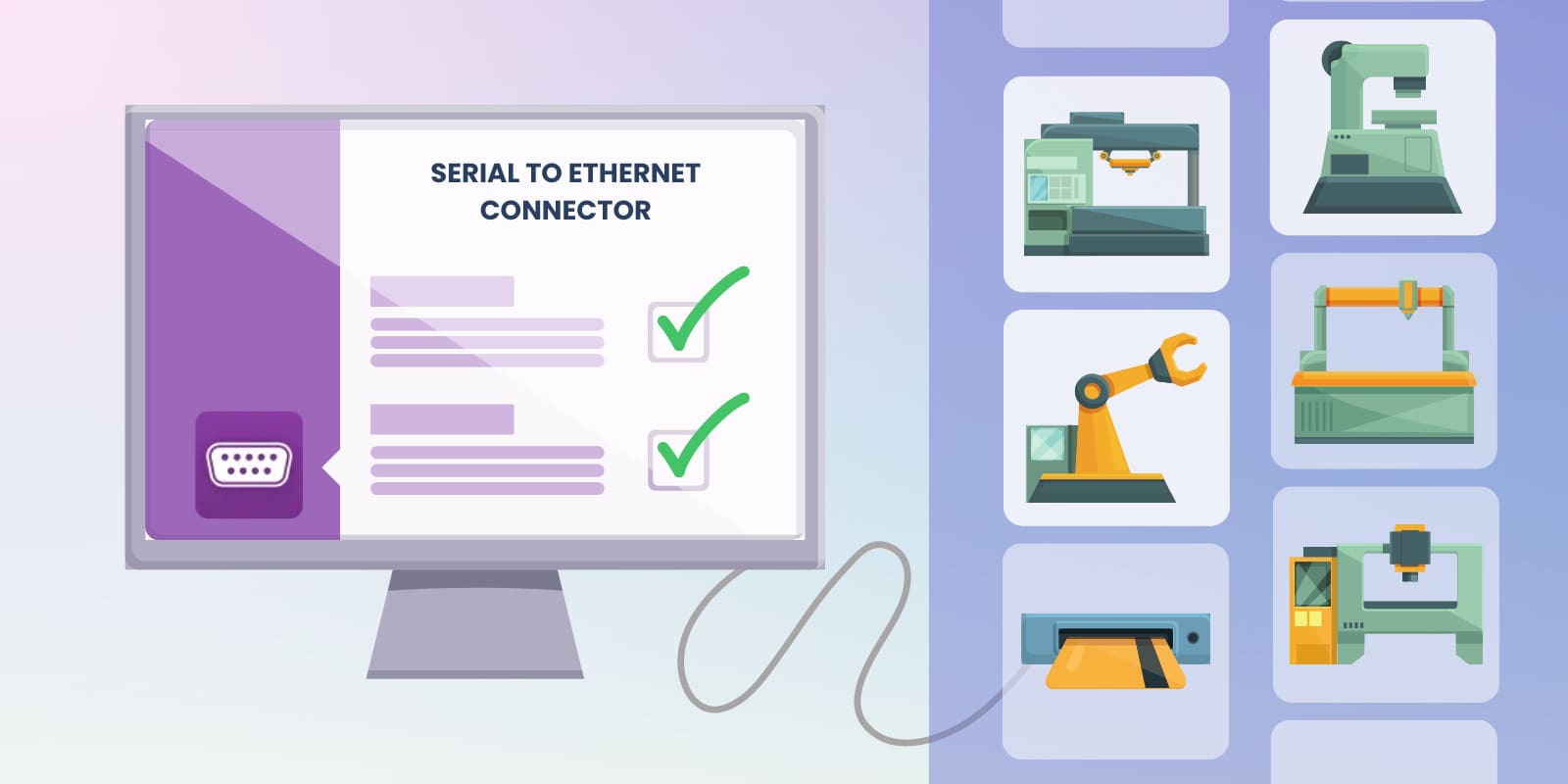
When using a serial port emulator, data generated from a serial application or device is converted from serial data to information that can be transferred over an IP-based network. A virtual serial port over Ethernet provides all of the functionality of a physical COM interface. Data is converted in both directions to allow network transmission and then turned back to serial signals for interaction with devices and programs.
Serial over Ethernet software allows users to connect remote, network-connected serial ports and devices. It accomplishes this by creating virtual serial ports that emulate physical interfaces. With this serial port emulation utility, you can use computers without COM ports to connect to remote serial devices without any additional hardware or cabling.
Industrial automation systems and production lines achieve tremendous benefits by routing their RS232 data transmission over network. They are also useful when dealing with serially-based point-of-sale equipment that needs to be accessed from a remote location. The beauty of using virtual serial connectivity is that users gain the same level of functionality as if they were locally attached to the devices. Here’s a scenario where you could use Serial to Ethernet Connector to establish communication. You need to access a peripheral device located a considerable distance from your computer. The program that will process the information from the device is installed on your machine, but you have no serial interface. Simply follow this procedure to create a connection with a virtual COM port.

A network serial port server solves the problem of attaching to serial peripheral equipment that is not within the range of a direct cabled connection. Employing serial over IP network technology lets users access your serial devices no matter where they are without being physically connected to them.
The technology works by converting serial data to the network format so it can be transmitted over a network. The converters translate serial data over Ethernet and back. Once the COM signals are in TCP/IP format they can be transmitted over any IP-compatible network such as your company’s LAN or the Internet.

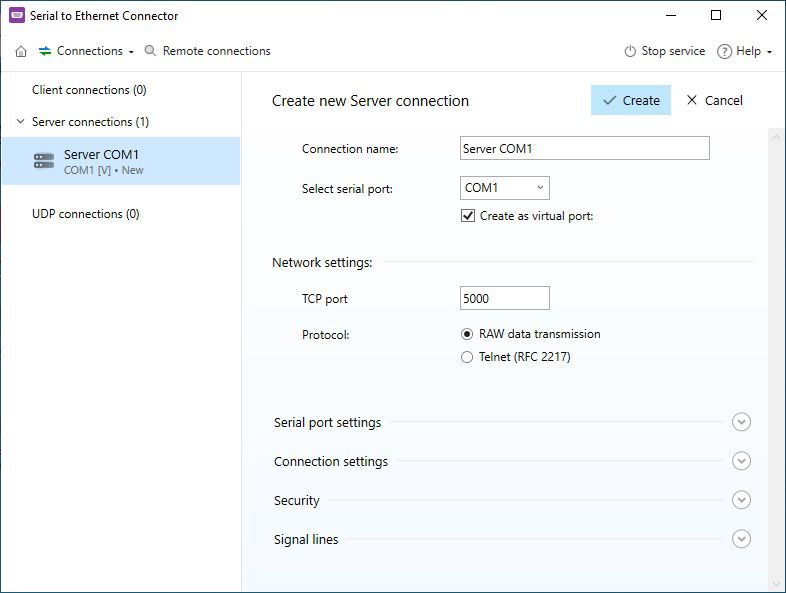
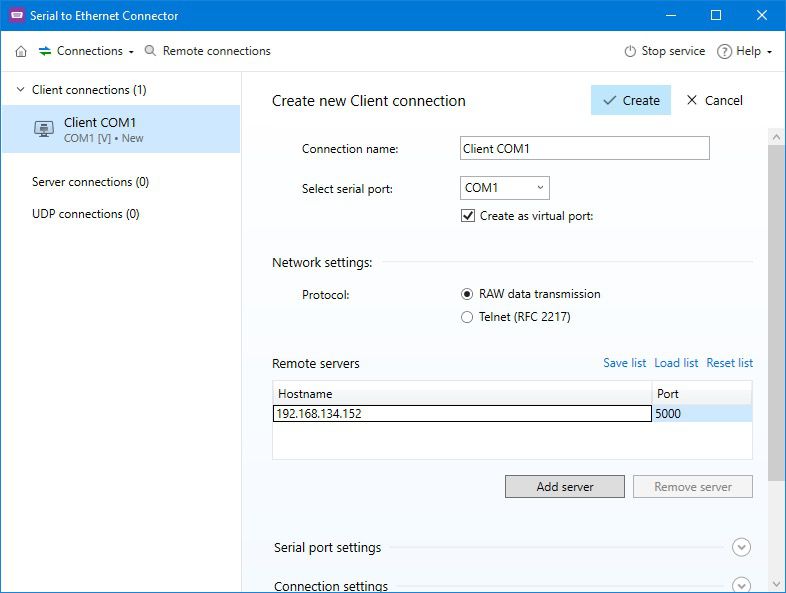
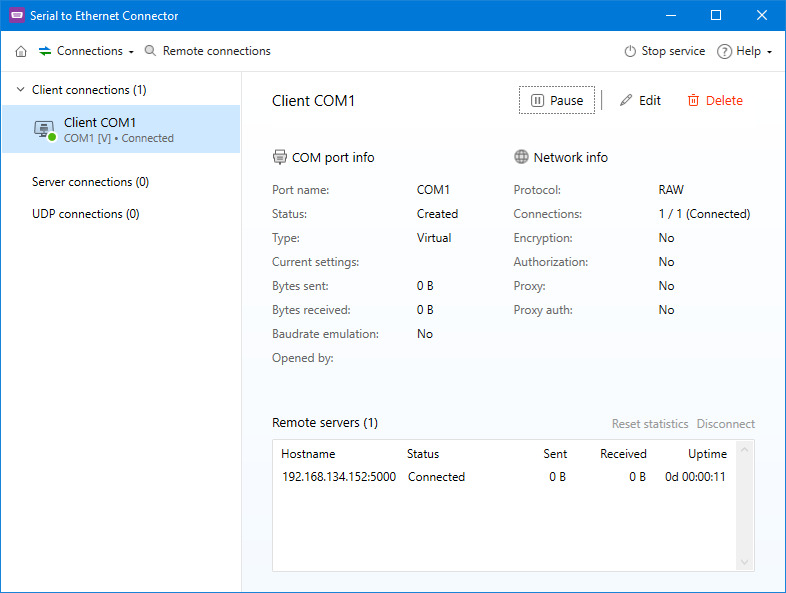
Serial to Ethernet Connector also provides Linux virtual serial port over Ethernet capability. It offers the same functionality as the Windows version of the application and can easily be downloaded to your Linux machine.
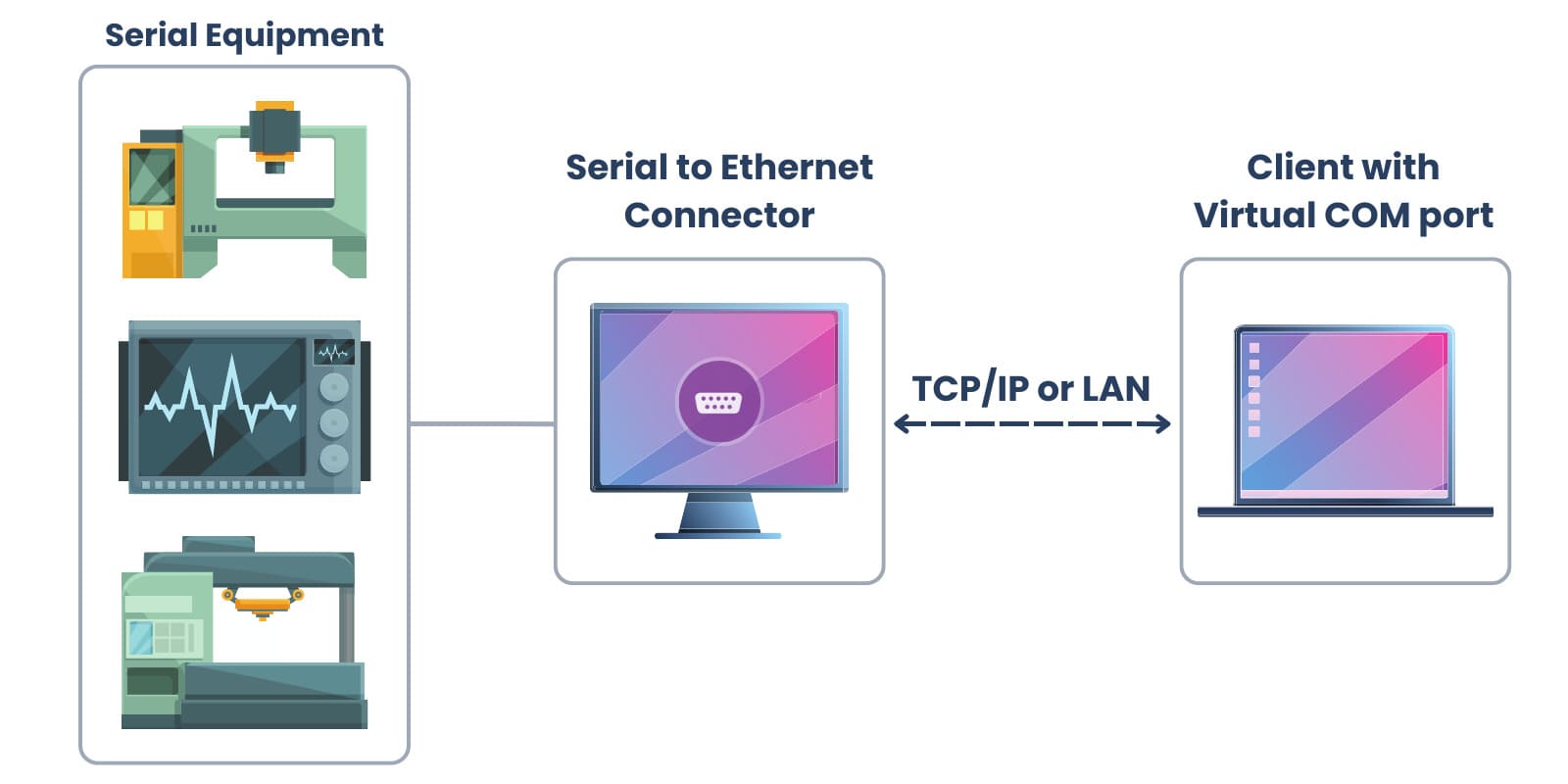
There are also alternative methods that you use to send serial data over the network using tools that are included as part of most Linux distributions.
One option is to use netcat to pipe serial data. This can quickly become messy as you need to open a separate instance of netcat for each serial connection. You can create a xinetd service to create persisting connections like this:
service testservice
{
port = 5900
socket_type = stream
protocol = tcp
wait = yes
user = root
server = /usr/bin/netcat
server_args = "-l 5900 < /dev/ttyS0"
}
Be sure to change the /dev/ttyS0 to the name of the serial device involved in the connection. This method provides a free virtual COM port over Ethernet solution.
Some other tools that have been tested and can provide virtual serial port over Ethernet on Linux machines are:
This utility allows users to connect to a serial port from the network. It is a self-developed program that gives the user a tool to setup and configure serial ports. It is also useful for modifying port parameters as well as controlling and monitoring serial interfaces.
Short for "remote tty”, remtty uses pseudo ttys to establish network connections. Using this tool enables Linux users to enjoy the same functionality of Cisco's Windows-based Dialout application and use direct connections to machines with dial-out modems for faxing and sending messages.
